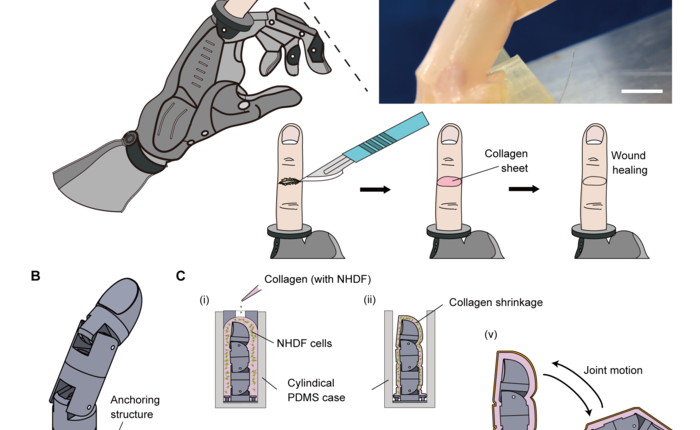University of Tokyo researchers created a controllable robotic finger covered with living skin tissue. It has living cells and supporting organic material grown on top of it, providing shaping and strength. As the skin is soft and can heal itself, it is useful in applications that require a gentle touch and robustness.
This is the first time researchers have used these materials on a working robot. They make the synthetic skin from a lightweight collagen matrix known as a hydrogel, where several kinds of living skin cells called fibroblasts and keratinocytes are grown. The skin is grown directly on the robotic component, requiring specially engineered structures that can anchor the collagen matrix to them.
The main long-term goal of this research is to open up new possibilities in advanced manufacturing industries. Other areas such as cosmetics, pharmaceuticals, and regenerative medicine could also benefit. This breakthrough could potentially reduce the cost, time, and complexity of research in these areas and could even reduce the need for animal testing.

